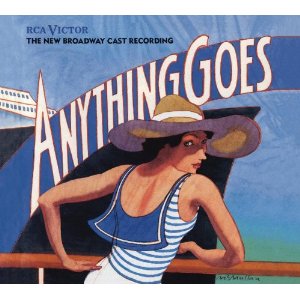SITE GUIDE
SEARCH
REVIEWS
REVIEW ARCHIVES
ADVERTISING AT CURTAINUP
FEATURES
NEWS
Etcetera and
Short Term Listings
LISTINGS
Broadway
Off-Broadway
NYC Restaurants
BOOKS and CDs
OTHER PLACES
Berkshires
London
California
New Jersey
DC
Philadelphia
Elsewhere
QUOTES
TKTS
PLAYWRIGHTS' ALBUMS
LETTERS TO EDITOR
FILM
LINKS
MISCELLANEOUS
Free Updates
Masthead
A CurtainUp Review
Forever Dusty
|
"Can you believe it? Nineteen-eighty-seven has been my best year since Nineteen-sixty-seven. Even the drag queens are doing me again. "— Dusty Springfield
|

Kirsten Holly Smith
(Photo: Joseph Marzullo/WENN) |
A caveat to all Dusty fans: This musical does not g by the letter, but the spirit of Dusty’s life. In fact, ghe authors, have tucked a note into the program explaining that their basic narrative “is true, but in fictional form,” and that it takes “liberties with the time sequence of events” in Dusty’s life.
The opening scene takes us to a Memphis recording studio in 1968. Dusty (the feisty Kristen Holly Smith) attempting to record perhaps the greatest hit of her career, “Son of a Preacher Man,” with the renowned producer Jerry Wexler (the excellent Benim Foster). Whatever the reason, Dusty gets a severe attack of jitters, and the session is aborted after take 26.
Creating a show about a legend requires not only a burning passion for your subject, but the strong dramatic instincts to make it work on stage. For better or worse, Smith and Vankin don’t overstuff the showl. They might not completely pluck out the mystery of Dusty, but they show you what made her tic, and deal with both her triumphs and personal demons
We follow Dusty’s life from her days at St. Ann’s School for Girls in post-war London to her musical collaborarion with her brother Tom (Sean Patrick Hopkins) and his band “The Springfields.” In addition, you will follow this diva with the heavy eye-liner and Blonde Beehive as she performs with the Lana Sisters or in her own solo career that spawned such classics as “I Only Want To Be With You,” and “The Look of Love.” Also covered is her romantic relationship with Claire (the attractive Christina Sajous) and her struggles with drug abuse and alcoholism. The 90 minutes could use a few more anecdotes and a little more of her music. After all, the songs are the big draw thing here and, unfortunately, some great songs like“Spooky” are not included.
There's really no single high point though the full studio recording of “Son of a Preacher Man” in Memphis is the one that most pings with Dusty’s personality. A kind of fleshed-out reprisal of the opening scene, it again shows Dusty as a nervous wreck trying to perform a song that seemed to her the rough equivalent of the Gordian Knot. Her frustrated, ncomplaint to veteran producer Jerry Wexler and parses the problem: “The sound’s not right. The beat is sloppy. My voice is weak. And this song! How do I sing this? She wants to make love with a preacher’s son? Does that sound like anything I’ve ever experienced?”
Happily, Dusty did eventually nail that song in a New York City studio and it eventually became a megahit as well as a part of the Pulp Fiction’s soundtrack. But if there is any message here, it is that success didn’t come easy to this white Soul singer. Born to Irish-Catholic parents in England (her birth name was Mary Isobel Catherine Bernadette O’Brien), sometimes crawled, and sometimes clawed her way to the top of the music charts.
Wilson Chin’s minimalist sets communicates the realism of recording studios via a standing microphone, a few furniture pieces, and bare space. To complement Dusty’s platinum blonde bee-hive, Nancy Palmatier furnishes the singer with 60s-styled outfits, including the singer’s trademark long gowns. Richard Dibella’s lighting is serviceable, alternately flooding the stage with bright light, or toning it down for the Sapphic scenes with Dusty and Claire.
As directed with a firm hand by Randal Myler who has also helmed bio-musicals about Hank Williams and Janis Joplin,, brims with the sounds of Motown, Rhythm & Blues. If only it had even more of the unforgettable songs of Dustty.
|
Forever Dusty Written by Kirsten Holly Smith and Jonathan Directed by Randal Myler Cast: Kirsten Holly Smith (Dusty Springfield), Benim Foster (Jerry Wexler/Bob Thackeray ), Christina Sajous (Claire). Colleen Sexton (Becky/Gini), Sean Patrick Hopkins (TomSpringfield) Sets: Wilson Chin Costumes: Nancy A. Palmatier Sound: Matt Kraus Lighting: Richard Dibella Production Manager: James E. Cleveland New World Stage at 340 W. 50th Street, Stage 5. Tickets: From $69-$99. Tel. 212/2396200 From 11/11/12; opening 11/18/12; open run. Monday@7pm, Wednesday through Saturday @ 8pm. Wednesday and Saturday matinee @ 2:30pm, Sunday matinee@3pm. Running time: 90 minutes with no intermission. Reviewed by Deirdre Donovan based on press performance of 11/16/12 |
|
REVIEW FEEDBACK Highlight one of the responses below and click "copy" or"CTRL+C"
Paste the highlighted text into the subject line (CTRL+ V): Feel free to add detailed comments in the body of the email. . .also the names and emails of any friends to whom you'd like us to forward a copy of this review. Visit Curtainup's Blog Annex For a feed to reviews and features as they are posted add http://curtainupnewlinks.blogspot.com to your reader Curtainup at Facebook . . . Curtainup at Twitter Subscribe to our FREE email updates: E-mail: esommer@curtainup.comesommer@curtainup.com put SUBSCRIBE CURTAINUP EMAIL UPDATE in the subject line and your full name and email address in the body of the message. If you can spare a minute, tell us how you came to CurtainUp and from what part of the country. |

Slings & Arrows- view 1st episode free
 Anything Goes Cast Recording
Anything Goes Cast RecordingOur review of the show
 Book of Mormon -CD
Book of Mormon -CDOur review of the show

